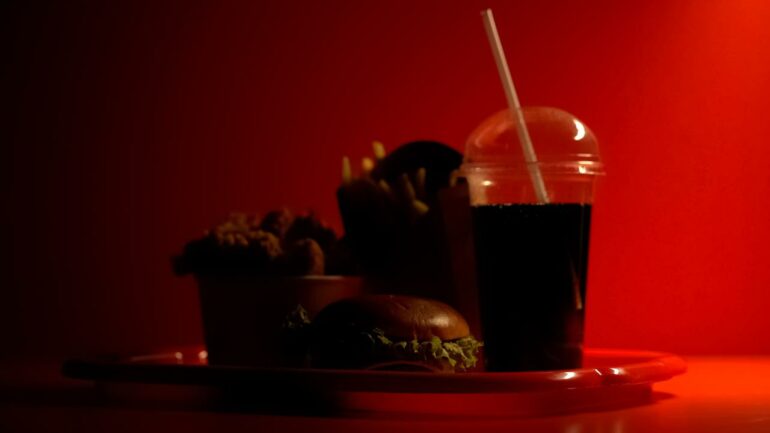Do you really want to order a soda with your burger? Just one soda can have more added sugar than the entire daily limit recommended for most adults.
Seeing a warning icon on a restaurant menu may help consumers identify the high amounts of added sugar hidden in menu items—and it may even convince them to reach for healthier items like water.
Those are the observations recorded in a new University of California, Davis, study. In a national survey sampling more than 1,300 adults, researchers found that added-sugar warnings with icons plus text, or icons only, were effective at getting a “high added sugar” warning message across to people. The survey took place in 2021.
“Excess added sugar in our food supply is a leading driver of Type 2 diabetes, which is predicted to affect about half of all U.S. adults in their lifetime,” said the study’s lead author, Desiree Sigala, UC Davis postdoctoral researcher in the Department of Molecular Biosciences.
The study, published online in the July issue of the journal Preventive Medicine, is believed to be the first of its kind to design and test the effects of added-sugar warnings for restaurant menus. And while the United States Food and Drug Administration requires large chain restaurants to make some nutrition information available in restaurants, there is currently no requirement for added sugar to be publicly disclosed for restaurant foods, researchers said.
This leaves consumers in the dark about the high levels of added sugar in their meals, which can contribute to negative health outcomes, researchers said. New York City recently sought to address this problem by passing a law requiring added-sugar warnings on prepackaged restaurant menu items. Policymakers across the country are considering similar warnings for added sugar on restaurant menus.
“By exposing the high amount of added sugar in ordinary restaurant foods, these warnings could help consumers make informed decisions,” said senior author Jennifer Falbe, UC Davis assistant professor of nutrition and human development in the Department of Human Ecology. “But more importantly, requiring these warnings could incentivize restaurants to offer a wider variety of options that are not loaded with sugar.”
The icons, designed by the study team, resemble stop, yield, and “caution” traffic signs.
Warning icons are a simple way to equip consumers with nutrition information and nudge companies to improve the healthfulness of their products, without taking up space on the menu, researchers said.
In the online, randomized study, participants were shown either a control label (a QR code), one of six possible icon-only added sugar warning labels, or one of the icons combined with three text variations: “high in added sugars,” “high sugars” and “sugar warning.” Each icon contained an exclamation mark or an exclamation mark with a spoon. While icon-plus-text and icon-only labels garnered favorable responses among participants compared to the control labels for the outcomes of perceived effectiveness and knowledge of items’ added sugar content, there were no significant differences when comparing icon-only to icon-plus-text labels, researchers said.
According to the researchers, the design of the labels was based on sodium warning labels required by law for New York City and Philadelphia chain restaurant menus.
Furthermore, most participants in the study, or 80%, supported the added-sugar warning labels being used on restaurant menus.
“These promising results support the need to further develop and test restaurant menu added-sugar warning labels by conducting experiments with menu ordering outcomes to determine behavioral effects,” Falbe said.
More information:
Desiree M. Sigala et al, Perceived effectiveness of added-sugar warning label designs for U.S. restaurant menus: An online randomized controlled trial, Preventive Medicine (2022). DOI: 10.1016/j.ypmed.2022.107090
Citation:
Warning labels could help customers identify hidden sugar in restaurant menus (2022, June 6)



